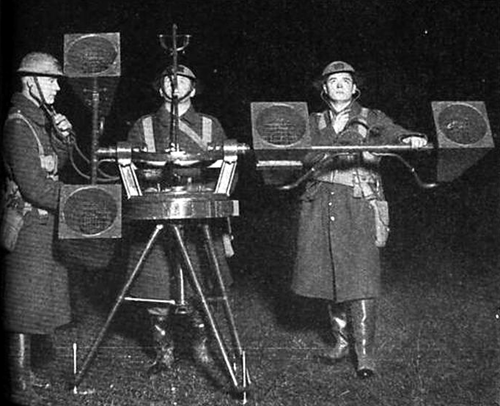Troubleshooting Examples
|
|
|
Complaint:
A. "The tape machine tension needs to be adjusted because our 14" reel of tape is slowing it down." T. "How old are these tapes?" A. "About 10 years." T. "Did you check the heads?" (for dirt) A. "No." Real Problem: Totally oxide-caked heads. Conclusion: The assistant had the right idea, but in the wrong direction. The tension was sufficient for normal operation, but the tape was depositing so much oxide on the heads that there was too much friction to overcome in order to play the tape at the proper speed. The first thing to check when a tape slows down or stops is to see if it is depositing oxide on the heads. Fact: 'Old Tapes Shed' When a tape sheds enough to stop it from moving across the heads, the tapes must be 'baked' in order to be played. | ||
|
Complaint:
A. "There a is buzz coming out of the monitors." T. "How would you go about solving the problem?" A. "I guess I'd check the speakers and the amp, then maybe the wiring." T. "Well, what are you sending to the monitors." A. "The stereo buss." T. "Let's start muting the channels on the console one by one to see what happens." Real Problem: Noisy EQ on a channel module. Conclusion: The assistant was going in the totally wrong direction here. Generally speaking, when you've got a hundred or more inputs going through the console to the monitors, a buzz will most likely be coming from one of those signals and not the monitors themselves. In the process of muting the channels one at a time, the offender was eventually discovered. Once the offending module was found, a quick press of the EQ button to remove it from the circuit revealed that the noise was coming from the EQ. Now the EQ on that channel can be fixed. | ||
Complaint:
Phone conversation: A. "There's a (60 Hz) buzz coming from the stereo buss." T. "Is it coming from any one module?" A. "No, it is still there even when all the channels are muted." T. "Well, everything was fine yesterday and even earlier today, you must have changed something." A. "No, nothing has changed, we're doing the same thing we were doing yesterday." T. "You're sure that nothing has changed." A. "I'm sure." T. "O.K., start turning off and unplugging all the guitar amps and microphone power supplies in the tracking room and tell me what happens." A. "No change, the buzz is still there." T. "You're ABSOLUTELY sure nothing has changed from your earlier setup? You haven't plugged anything in that wasn't plugged in yesterday or earlier today?" A. "I'm ABSOLUTELY sure that nothing has changed." T. "O.K. then, I'll be in to figure it out." Real Problem: The assistant had forgotten that he had plugged in a piece of outboard gear earlier that day without using a ground-lift on the power cord! Conclusion: The assistant showed good troubleshooting skill by muting all the modules in an attempt to isolate a possible offender. However, if the assistant had answered the second question correctly, I would have told him to put a ground-lift on the device and see what happens. Then the session would have been back up and running in all of about three minutes. Instead, it took two hours before I could get there, about 2 milliseconds for me to notice that they had a new piece of gear in the room, and about another 10 seconds to put a ground-lift on it and walk out. The clients lost a couple hours of wasted time because the assistant was not thinking clearly. Moral: Make sure your engineers can troubleshoot simple problems. | ||
|
Complaint:
C. "There's a buzz coming from the stereo buss. I've muted all the channels and it is still there." T. "O.K., let's start by turning off and ground-lifting the new gear." C. "No change." T. "O.K., let's turn off and move this computer monitor." C. "The buzz is gone." Real Problem: There was a computer monitor that had been setup on top of the console and was radiating RF into the stereo buss. Once it was moved to a new location, all was fine. | ||
|
Complaint:
A. "The 'CUT' button doesn't work on this module." Conclusion: The 'CUT' button actually worked fine; when it was pressed it cut the signal. The assistant mistakenly said that the button didn't work when in reality only the bulb was burned out. |

